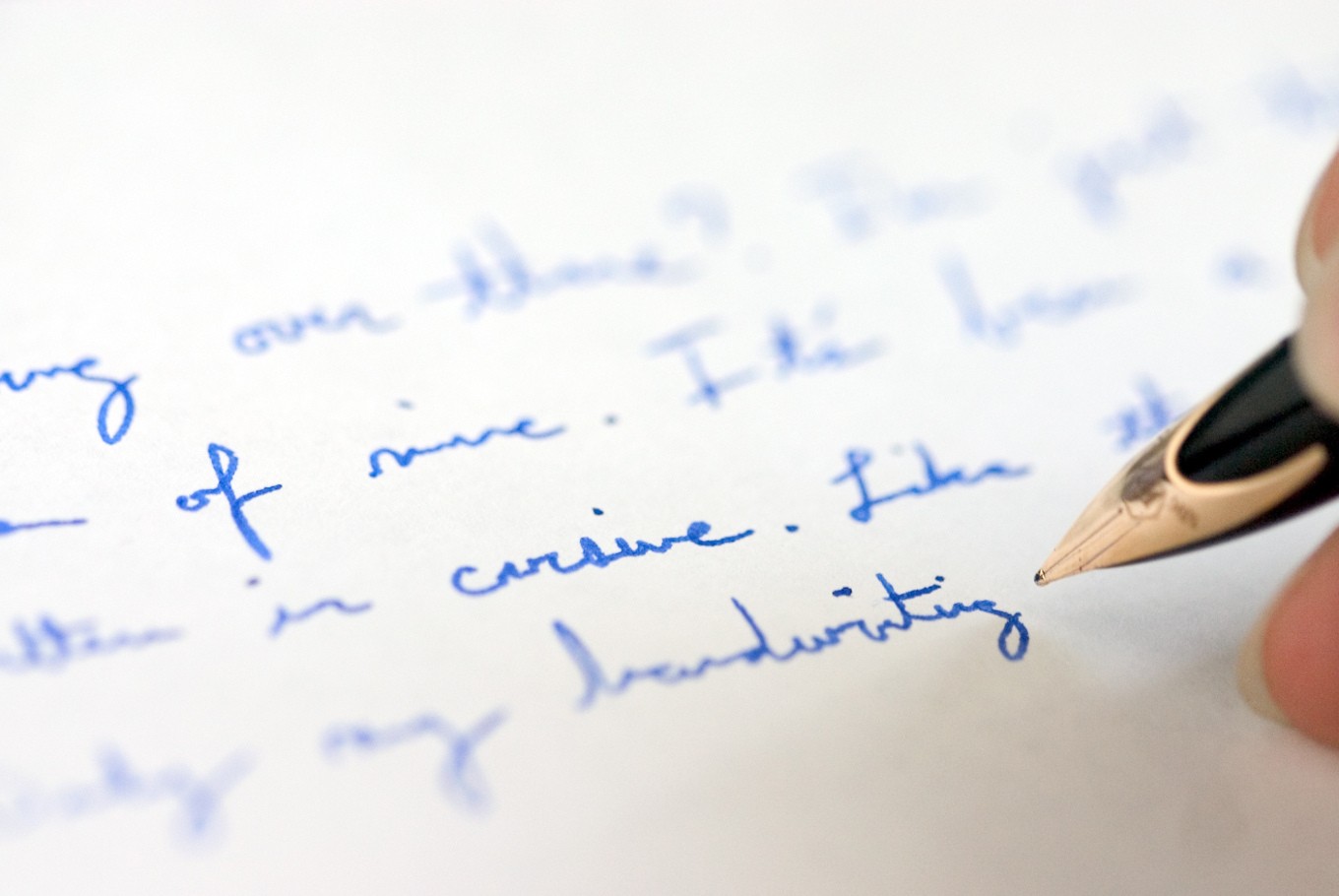Throughout history, word-workers and story-makers have been sharing their experiences on the stimulating effects of pen-and-paper writing. For instance, memoirist and fiction writer Robert Stone said of his pen use and mental clarity, “On a typewriter or word processor, you can rush something that shouldn’t be rushed–you can lose nuance, richness, lucidity. The pen compels lucidity” (Bruce 59). American philosopher Sidney Hook commented on writing and thought-salience, “The gravity of my thoughts seems to me to be in correlations with the pressure I put on my pen. When I type something, it always seems to be superficial because it seems to come off the top of my mind” (Bruce 58). In a similar way, novelist Anne Taylor noted that the muscular movement of writing with a pen put her imagination back on the right track (Brice 2010).
While famous writers’ tender musings on their craft may be nice to think about, is there any truth to the mental benefits of writing by hand for those of us who do not write for a living? Neuroscience says, “Yes!” Dr. Claudia Aguirre, neuroscientist and writer for the popular meditation app Headspace, explains that the physical formation of letter characters activates neural pathways that otherwise go untouched (Aguirre, 2017).
In the realm of cognitive function, a body of research demonstrates the necessity for children at the pre-literacy level to practice and learn handwriting. Actually learning to form characters, rather than tracing or typing, is linked to the skill of literacy. One 2017 study on the development of the literate brain explained this link in terms of the relationship between the visual and motor systems in the brain (Karin 2017). The action of handwriting helps bring about letter recognition by serving as a bridge between motor experience and visual processing (Karin 2017).
The writing practice of Chinese calligraphy has been explored across a variety of behavioral health contexts and shown to have positive effects on the cognitive states of people with Alzheimer’s disease and ADHD as well as the emotional well being of people with depression and cancer. One 2017 study showed how a calligraphic handwriting practice reduced physiological signs of stress just as well as a sitting-meditation practice (Kao, et al. 2014).
Writing has also shown to be an effective clinical intervention in some contexts. Several studies demonstrate the efficacy of written disclosure, or expressive writing, on the reduction of PTSD symptoms. In written disclosure, the client writes in three twenty-minute sessions on the content of their trauma, the associated thoughts and feelings, and a wrap-up. For instance, one study demonstrated that participants with PTSD who practiced written disclosure experienced decreases in dysphoria and physiological activation, as well as an increase in their ability to regulate overall responses (Smyth, Hockemeyer, & Tulloch 2008).
Another technique used in clinical settings to treat PTSD include Narrative Exposure Therapy (NET). In NET, the client records the account of their trauma not in isolation but in the context of their own constructed autobiographical account (Sloan, Sawyer, Lowmaster, Wernick, & Marx 2015). Here, the client is able to create new meaning of the traumatic experience(s) by re-processing and integrating them into the frame of their whole life (Sloan, Sawyer, Lowmaster, Wernick, & Marx 2015).
While handwriting as a self-care practice or cognitive-sharpener is great for the individual, benefits can also extend to relationships. When was the last time you sent or received a hand-written letter via snail mail? Do you remember how you felt when sending it off or seeing something that looked markedly different from the collection of bills in the mail? Some might say this type of exchange is a lost art form. It’s interesting to think that, not too long ago, snail mail served as a primary mode of communication. In an age where relational exchanges are largely digitized and immediate, it’s true that snail mail is simply not in the ranking today in terms of efficiency.
However, snail mail doesn’t have to rank or compare to other sender-receiver modes of communication for people to experience its positive effects on mental health and relationship building. With a little intention, paper, and pen, exchanging letters can have a presencing effect on both sender and receiver. For instance, it is difficult to write a letter in a knee-jerk reaction. It takes a level of care and processing that sending an email or text simply does not require. By virtue of the medium, people in snail mail exchanges, and hand-written ones at that, have the opportunity to handle the communication with less haste and more mindfulness, and this fosters connection.
Make writing by hand a part of your day, whether you drop a note to a friend in the mail, journal for ten minutes, or take notes a little differently in your business meeting or classroom. The positive effects on your mind may surprise you, especially if you and your writing hand have been estranged for a while.
Click here to create a TPN.Health profile and gain access to the clinical tools you need:
-Trusted Digital Referral Network
-Virtual CEUs
-Virtual Discussion Panels
References:
Aguirre, Claudia. “Does Writing by Hand Sharpen Your Creativity.” The Orange Dot, The Orange Dot, 19 July 2017, www.headspace.com/blog/2015/09/23/can-handwriting-sharpen-your-mind/.
Bruce, Harry. Page Fright: Foibles and Fetishes of Famous Writers. McClelland & Stewart, 2010.
James, Karin H. “The Importance of Handwriting Experience on the Development of the Literate Brain.” Current Directions in Psychological Science, vol. 26, no. 6, Aug. 2017, pp. 502–508., doi:10.1177/0963721417709821.
Kao, Henry, et al. “Calligraphy and Meditation for Stress Reduction: an Experimental Comparison.” Psychology Research and Behavior Management, 2014, p. 47., doi:10.2147/prbm.s55743.
Sloan, Denise M., et al. “Efficacy of Narrative Writing as an Intervention for PTSD: Does the Evidence Support Its Use?” Journal of Contemporary Psychotherapy, vol. 45, no. 4, 2015, pp. 215–225., doi:10.1007/s10879-014-9292-x.
Smyth, Joshua M., et al. “Expressive Writing and Post-Traumatic Stress Disorder: Effects on Trauma Symptoms, Mood States, and Cortisol Reactivity.” British Journal of Health Psychology, vol. 13, no. 1, 2008, pp. 85–93., doi:10.1348/135910707×250866.
Image Credit: https://www.thejakartapost.com/life/2018/11/04/writing-by-hand-improves-cognitive-abilities-says-expert.html
